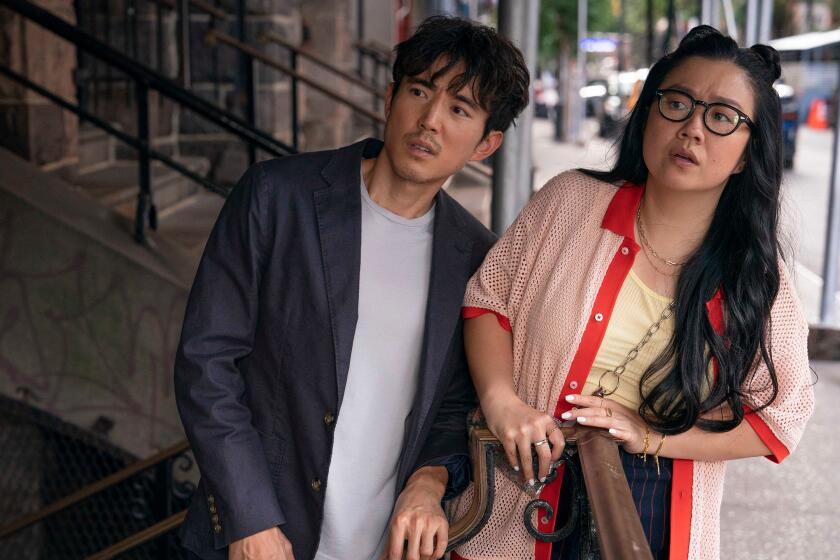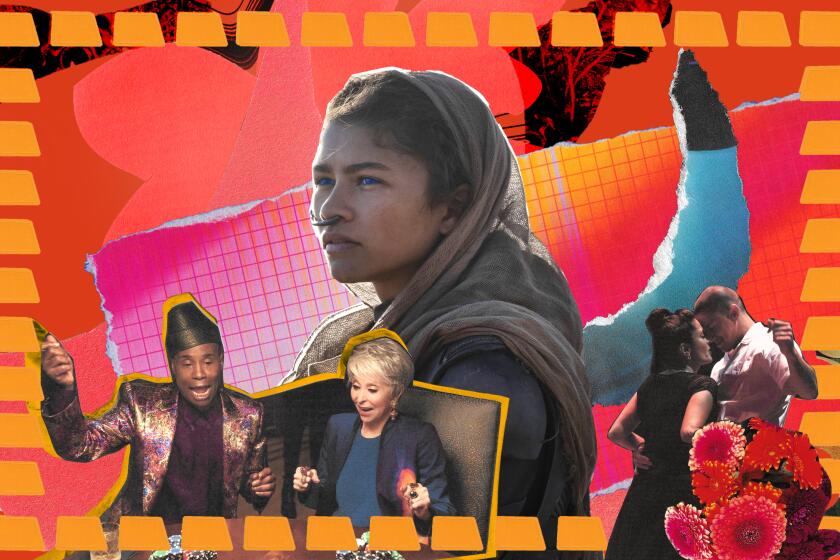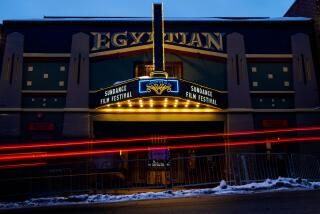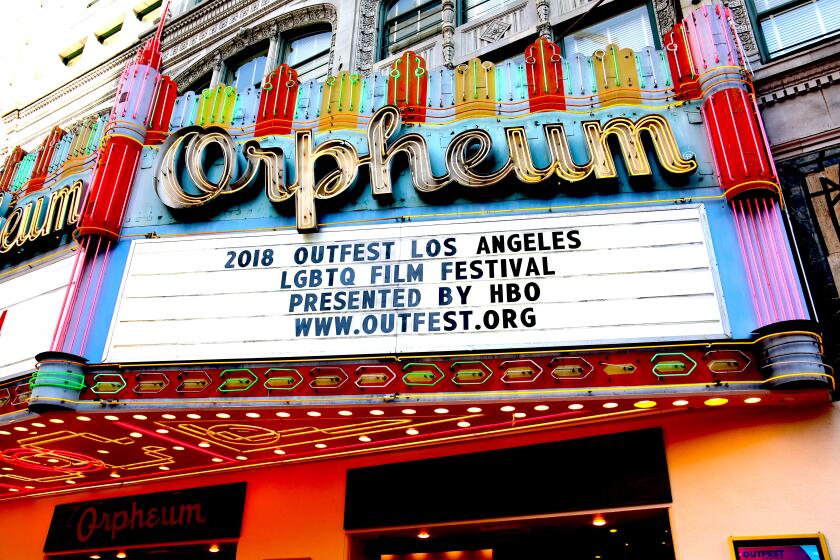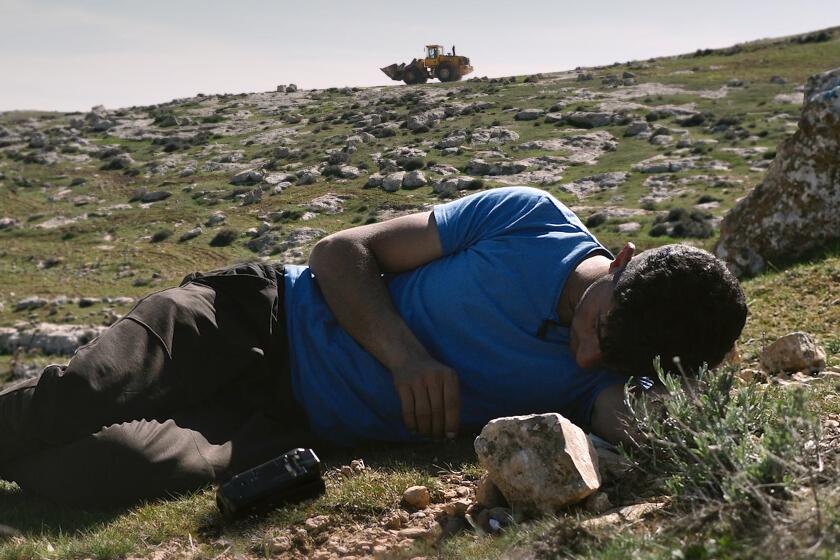Indie film is at a crossroads. And Sundance is full of ‘canaries in the coal mine’
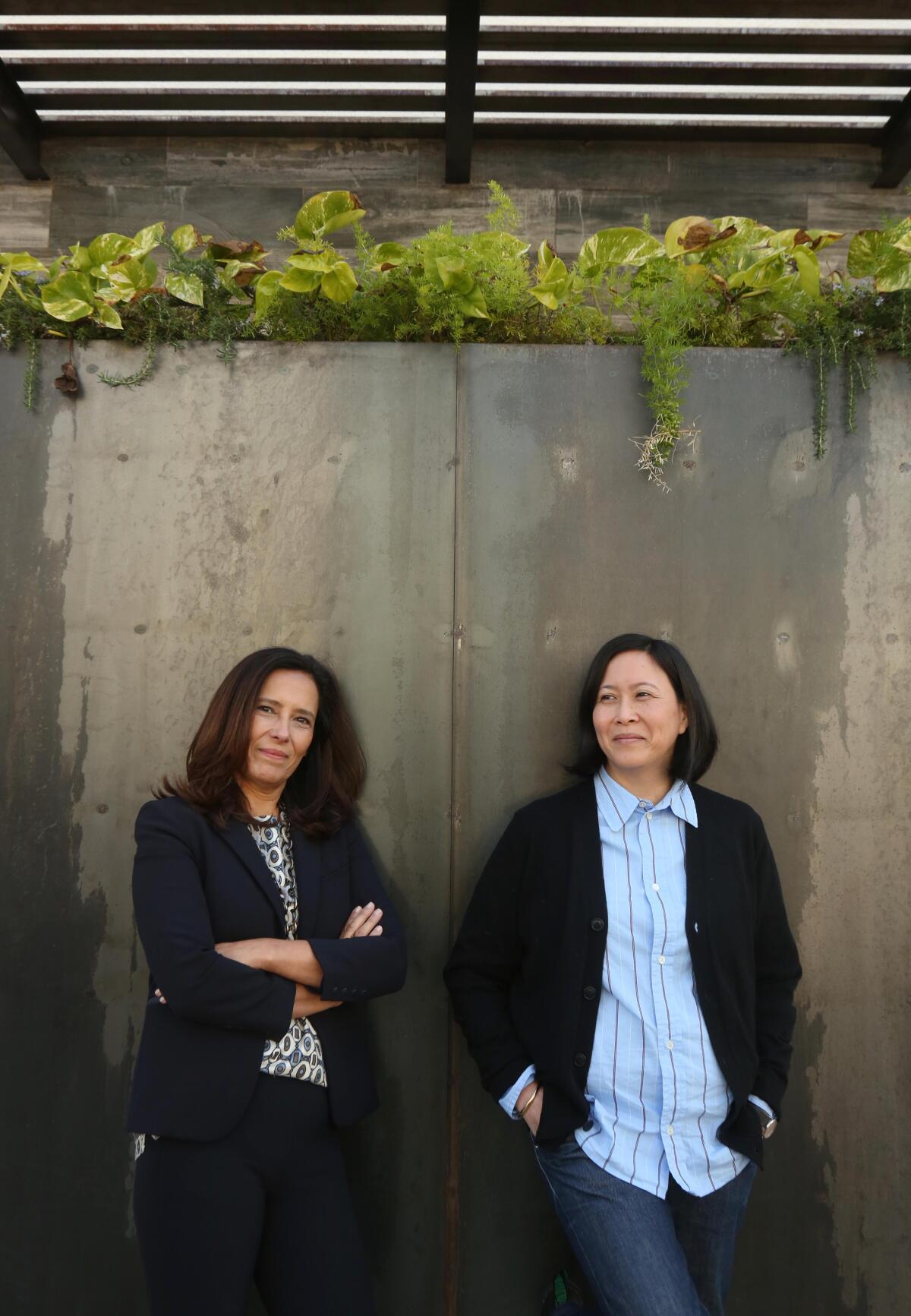
When the Sundance Film Festival last came to Park City, it was the Before Times. Before COVID-19 drastically altered billions of lives, yes. But also before the carefully cultivated entertainment industry ecosystem of which the festival is a part was wildly upended.
In addition to halting the in-person version of the annual Utah conclave in 2021 and 2022, after all, the pandemic caused theatrical filmgoing to cease altogether for a time. And — for a host of reasons, from public health concerns to the proliferation of streaming platforms — audiences for the arthouse movies that are the festival’s lifeblood have been slow to return to cinemas in the years since. Even after producing last year’s Oscar winners for best picture (“CODA”) and documentary feature (“Summer of Soul”), Sundance returns to Park City on Thursday as the purpose of the festival, and perhaps of film festivals in general, seems ripe for reconsideration.
What, in 2023, is the Sundance Film Festival for?
“It kind of sets the tone for the year,” said Joana Vicente, CEO of Sundance Institute, citing the festival’s traditional January date and penchant for identifying and incubating emerging talent. “It’s this opportunity to spotlight all of the amazing new voices, new films that the team is excited about. And we put them out there and it’s like we are setting culture. We are really creating the conversation.”
“Sundance is a place where we convene so many different groups of people,” said Kim Yutani, the festival’s director of programming. “It’s filmmakers, of course, but then it’s also press, it’s industry, it’s people who just love independent cinema. And to be able to create a program full of new films, in some cases by people who are not household names, to be able to put them into a program and to launch these films with this kind of nexus of constituents, to me that feels like a privilege.”
Sundance plans to be back in person in January, premiering new films with Anne Hathaway, Tiffany Haddish, Gael Garcia Bernal and more.
There’s no doubt that Sundance continues to offer talent a path to higher-profile projects: Writer-director Lee Isaac Chung, to name just one, went from winning awards at the festival in 2020 with the semi-autobiographical “Minari” to directing on the upcoming season of the “Star Wars” streaming series “The Mandalorian.” Less clear, though, is the lasting impact of the films themselves, as Hollywood companies continue to search for the right blend of streaming and theatrical, popular and prestigious, to fill out their film portfolios.
In recent years, streaming services such as Netflix, Hulu, Amazon Prime Video and Apple TV+ have paid outsized sums of money for titles, only for their nontraditional release strategies and unpredictable algorithms to seem to soften their impact. Meanwhile, distributors with a stronger investment in theatrical exhibition, such as Sony Pictures Classics, Roadside Attractions, Focus Features, Searchlight Pictures, Magnolia Pictures and IFC Films — all strong presences at Sundance before the streaming services — were forced to compete with unprecedentedly deep pockets. (Representatives for Netflix, Apple TV+ and Amazon Prime Video declined to comment for this story.)
Now, as the streamers trim the fat for a shifting economy and the more established players face an uncertain theatrical landscape, most everyone is scratching their heads — over what the new normal might be, or even how to define success.
“The short answer is we don’t know,” said John Sloss, founder of Cinetic Media, a company involved in some of the biggest sales in the festival’s history. “We don’t know how the theatrical experience is going to work for specialized movies and is that audience going to come back. I think to a certain extent, the distributors and this market will be the canaries in the coal mine about what the confidence is that that market’s going to return.”
Sloss added, “I think we’ll learn a lot by what happens at the festival and in the immediate aftermath.”
Tellingly, perhaps, the most successful film from the 2022 festival is not grand jury prize winner “Nanny,” purchased by Amazon and released with minimal fanfare at the end of the year, or audience award winner “Cha Cha Real Smooth,” likewise acquired by Apple TV+ and released to a more muted reception than expected. It’s John Patton Ford’s “Emily the Criminal,” featuring a powerhouse performance by Aubrey Plaza and a highly relevant vein of dead-end frustration. Released in partnership by Roadside Attractions and Vertical Entertainment, the film made more than $2 million at the box office over the summer, continued to earn money as it hit VOD platforms and finally found its largest audience yet when it began streaming on Netflix late in the year. The film also earned Gotham and Spirit award nominations and a DGA nom for Ford.
“I don’t think it’s an existential moment, because I think that indie films will survive,” said Howard Cohen, co-president of Roadside Attractions, which will be at Sundance this year scoping out potential acquisitions and as a producer on Randall Park’s feature directorial debut “Shortcomings.” “But certainly old models are being, let’s say, heavily reevaluated.”
The Wide Shot is going to Sundance!
We’re sending daily dispatches from Park City throughout the festival’s first weekend. Sign up here for all things Sundance, plus a regular diet of news, analysis and insights on the business of Hollywood, from streaming wars to production.
You may occasionally receive promotional content from the Los Angeles Times.
The industry’s approach to the festival changes with the times as surely as the topics covered by the films in the festival, which this year includes movies that grapple with gendered power dynamics, the immigrant experience, the war in Ukraine and a host of other hot-button subjects.
“We change our business model constantly because the business changes constantly,” said Tom Bernard, co-president of Sony Pictures Classics, which at last year’s festival picked up “Living,” starring Bill Nighy, then released it in conjunction with an awards campaign for the lead actor.
“The streamers are going to sort of collide. How many [services] can you subscribe to?” said Bernard. “I think that you’re going to have a new version of a cable package, only it’s going to be your streamer package. Eventually when the fear of COVID is over, the audience will be back.”
Among Roadside Attractions’ previous Sundance releases (in partnership with Amazon) is 2016’s “Manchester by the Sea,” which went on to make nearly $50 million in the U.S. and win two Oscars — a result that now seems less aspirational than out of reach.
“I definitely don’t view it as apocalyptic,” said Cohen. “Part of it has nothing to do with COVID and has nothing to do with streaming. Part of it has to do with the nature of indie cinema, which over the past 30 years has had ebbs and flows, players come and dance with the movies for a while and then move on.
“Movies are unpredictable,” said Cohen. “So you can have ‘Manchester’ and then you can have 15 [other films] do nothing. And that has nothing to do with streaming or the pandemic.”

Writer-director Nicole Holofcener came to the festival with her first feature, “Walking and Talking” (1996); when her latest, “You Hurt My Feelings,” starring Julia Louis-Dreyfus, premieres this year, it will be the fourth of her seven feature films to launch at Sundance.
Holofcener has likewise witnessed the ups and downs of the indie film business over the years, having worked with a number of different distributors. Her previous film, 2018’s “The Land of Steady Habits,” was released by Netflix.
“I’m certainly not getting bigger budgets,” said Holofcener. “If I had guessed, ‘Oh, I’ll be making my seventh movie in 2022, would I be getting less than I got from for a movie I made 10 years ago?’ I would not have guessed that. It’s become more competitive and movie-star based, and there’s so much on TV that less movies are getting made. It wasn’t a piece of cake to get mine made, and I was glad to get what I got. I have hopes that my movie will play in the theaters longer than 10 minutes, but I don’t know. And I didn’t really have that fear in the past.”
The film already has distribution with the premium boutique company A24, yet the precise, insightful adult dramedy of which Holofcener is a master practitioner is exactly the kind of movie that many audiences are now reluctant to turn up to theaters to see, having grown accustomed to watching them on streaming at home.
The entertainment experts at The Times select the movies we’re most looking forward to in 2023.
“Of course, my preference would be for people to see it in the theater. Not necessarily an empty theater, but at least they’re not going to get up and take care of their kid or make dinner in the middle,” said Holofcener. “Theaters are preferable, but honestly, I’ll take it anyway I can get it. I think a lot of people watch my films streaming and discover them streaming. They’re not exactly cinematic opuses — it’s not like ‘Babylon,’ or ‘Avatar’ or something you should see on a big screen. It’s OK to watch mine on a large TV. I’ll say large. Sixty-five-inch, no less.”
When Roger Ross Williams won the directing prize for his documentary “Life, Animated” in 2016, he was already an Oscar winner for a short film in 2009. Yet, as he put it, “I feel like I wouldn’t even have a career without Sundance.”
Williams’ first scripted feature, “Cassandro,” starring Gael García Bernal, has already been picked up by Amazon Prime Video, and Williams acknowledged that its theatrical life may be brief.
“I always want people to experience films in a theater because there’s nothing like that collective experience, but I realize in today’s world that that may be challenging for a lot of people,” he said. “So we do have to meet audiences where they are.
“Sundance became this powerful force and put independent filmmaking on the map,” said Williams. “It remains even more important today when huge corporate interests are controlling a lot of the product out there. We are losing space for true independent voices, and Sundance amplifies those voices. When I was there with my first film, I had nothing. I didn’t have a distributor. They just liked my work and invited me.”
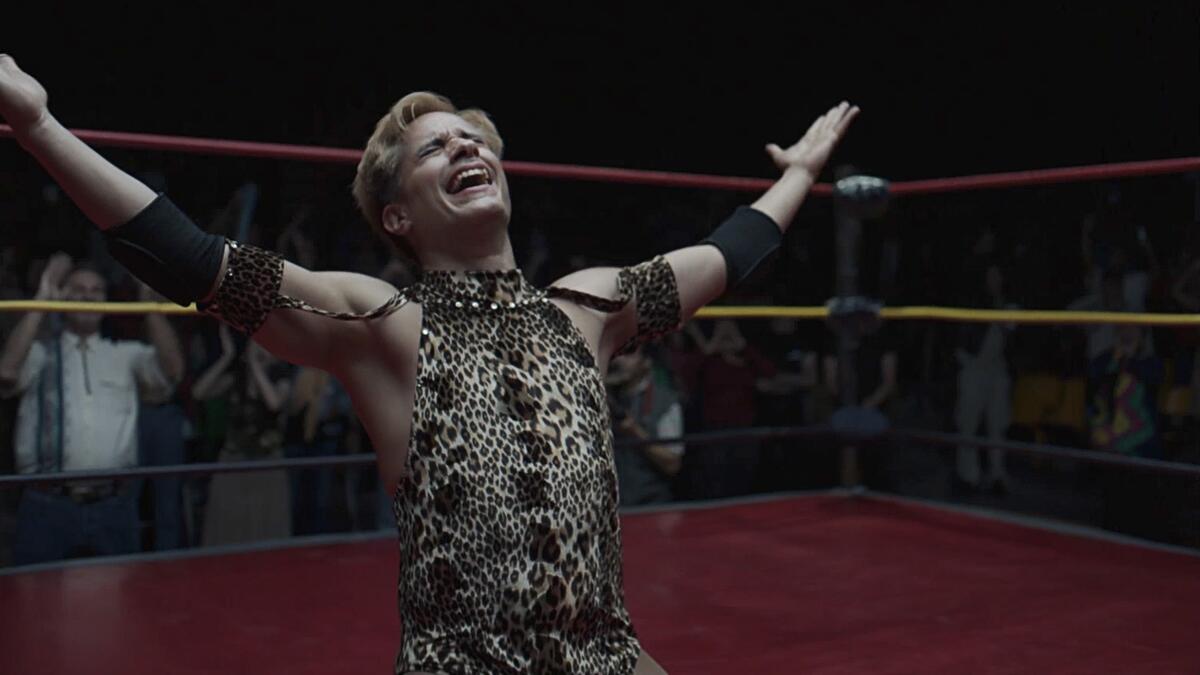
The two pandemic editions of Sundance in 2021 and 2022 featured an online component that greatly expanded the potential audience for the festival, allowing people to participate without traveling to the side of a mountain in Utah. This year, a limited selection of films from the program will be available to stream online during the second half of the festival after their in-person premieres.
“That’s the future,” said Vicente. “At some point, arthouse audiences are aging, and we do need to get younger people excited.”
Yutani has an eye to the future as well, as she assembles both her programming team and the titles selected in the festival in any given year.
“I listen closely to our younger programmers. If they feel passionate about something, that means something,” said Yutani. “I used to think as a programmer you get better with age because you just know more about life and whatnot. But I think that oftentimes programming can be very instinctual, and to know what audiences are going to respond to is a skill, but it’s also something that you feel. Eventually it’s up to me to make the final choice of whether something is in or out of the festival, but it is informed by all of those voices in the room.
“I want to have a festival where there’s room for a film like ‘Living’ and then there are films that are in our NEXT section or our Midnight section that speak to newer audiences who might not even know what Sundance is,” said Yutani. “But if they find out that a film that they love was world premiered at Sundance, then that creates a certain kind of awareness of the work we do.”
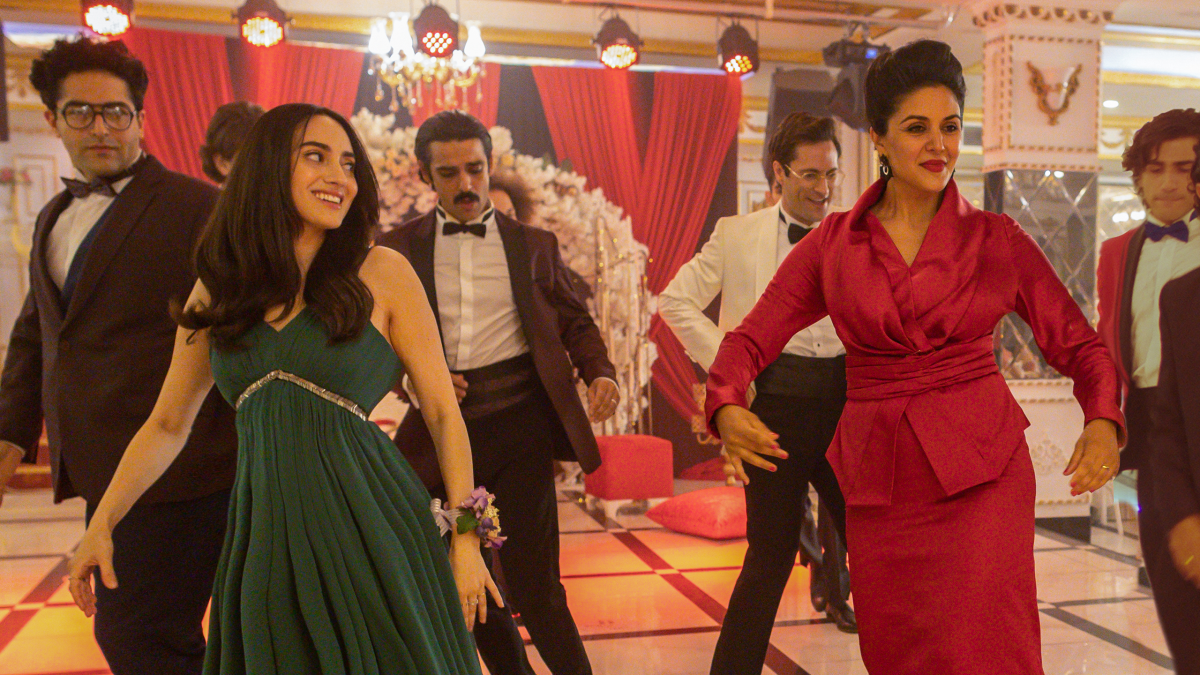
Writer-director Maryam Keshavarz won the audience prize in 2011 with her debut feature “Circumstance.” She is back in the U.S. dramatic competition this year with “The Persian Version,” an autobiographical tale of an Iranian American woman navigating both sides of her cultural identity.
“We all know that where we premiere, the stage that’s set by how we show our work and what environment, affects people,” said Keshavarz on what it means to be back at the festival. “The fact that they champion women, they champion queer people, I can’t think of any other place that has done it to that degree. And Sundance, not only do they show the work, but they’ve nurtured it from early stages. They support you as a career.”
Indeed, for all the changes that have come to the festival — and with new director Eugene Hernandez taking over next year, Sundance brings with it not only the scrutiny of a brand name, but also the reliability..
“Sundance is remarkably faithful, in my opinion, to what they’ve always been,” said Sloss. “And I think everyone involved with it deserves a lot of credit for that. And it is still remains the primary showcase in the world, or at least in the U.S., for discovering new voices. And it is the best documentary showcase and market in the world, period, hands down. And I think that’s where so much of the excitement of Sundance comes from.”
More to Read
Only good movies
Get the Indie Focus newsletter, Mark Olsen's weekly guide to the world of cinema.
You may occasionally receive promotional content from the Los Angeles Times.
